Shiva* is the last man one would expect to patronise a blood sport like cockfight. He ponders over every question with intelligent, unblinking eyes, breaks easily into an amiable smile and frets conspicuously behind a shy exterior. Shiva is also an accomplished Dhokra artist. I had spent most of the morning and afternoon at his home in a remote village of Bastar in Chhattisgarh south. He took me through the different painstakingly time-consuming processes required by the art, patiently answered my questions and gracefully posed for photographs. Late afternoon his sons came and stood around him like a familial orrery; it was ‘haat’ or market day in the nearby village and they wanted to know whether he thought their gamecock was ready?
Probably because roosters are always at each other, cockfighting is believed to be the world’s oldest spectator sport. In India itself it goes back over 6,000 years and was believed to have been a popular past time during the Indus Valley days. The roosters – called gamecocks – are bred specially for fighting and showered with great affection and pride. The exploits of a champion gamecock are the stuff of local lore and its owner looked upon with lot of respect and jealousy. “Even our own sons rarely bring us such repute,” one cockfight enthusiast grinned, tapping the thick wad from his wins that haat day. The gamecock nestling in the cradle of his elbow bled profusely but eyed me with such unswerving truculence I hurried away. And then there is also the money: a winner can fetch anywhere up to Rs 50,000 if not more at the raucous bidding that erupts near the ‘cockpits’ as the fight day gets over. Money well-earned as a lot of meticulous training goes into moulding a gamecock. The gamecocks are generally kept in darkened rooms to aggravate their inborn aggression. While some breeders claimed that their wards were fed the usual wheat or maize, some unabashedly lay their success to a steady diet of meat and mahua, local brew, at the start of a bout.
The setting is quite like any other street fight but with a much better-behaved set of spectators; at least in Chhattisgarh where I caught the sport across five different haats. People gathered around an open area usually a little removed from the main market ground. There were excited shouts, anguished cries and occasional protests but there was no mass frenzy. Very rarely did I see brawls breaking out either. Euphoria was well-contained. This is not just another rural sport but serious business too. A lot of money changes hands at the venue. It was a bit unsettling as well as incredible to see the nonchalance with which the humbly dressed tribal bandied about 500 and 1,000-rupee notes. The equanimity whether one won or lost was equally amazing. The generosity was heart-warming. The winner bought mahua for all and drank it often with the loser giving maudlin company; on many occasions they were neighbours, brothers even.
An officious looking chap with bleary eyes trying hard to focus went around the ground with a leather case that made him look like a quack surgeon; people with their prized roosters converged around him. He opened his case and tied steel spurs to cut-off talons. Neatly arrayed were spurs of various curvatures and pointiness. In many western countries and Africa where cockfights are rampant breeders chop off the wattle and the comb of the bird in order to minimise ‘vulnerable areas’ – which can come under attack during a fight. Here too many gamecocks had pruned combs especially. But most still had both intact. “Some do it,” Shiva said. “But there are many like me who believe that whether we win or lose we should not compromise on the dignity of our cocks – he has to look like the regal creature he is.” A bout lasts anywhere from less than a minute to even 10 minutes. The gamecocks fly in the air, peck and parry and slash each other with beaks and spurs. The longer the match lasts the wilder the crowd gets. The dead or fallen gamecock is almost immediately transformed into fried or curried comestible sold around the cockpit itself. The commercial intermissions are brief where announcements are made by a man walking around the ring, shaking a bough dramatically and shouting out aloud the next haat/fight day. Poor Las Vegas.
The recent ban on cockfights by the Supreme Court of India has brought a lot of attention to the sport which the tribal folk have no idea about. Cockfights tackle the ennui which would otherwise lead to a lot of other problems which lawmakers seem not to care about. “The tribal people of Chhattisgarh were primarily hunters and warriors and the cockfights provide them the much-needed vent in their otherwise non-happening lives,” says Awesh Ali who has been taking tourists around Bastar for over a decade. Domestic violence is almost unheard of in these parts. “All their frustrations and rages are vented at the cockfight,” he continues. “If you win, you go home and nurse your gamecock back to health for the next fight. If you lose, you start training your next one for the fight.” The women thus are left with the less exciting and mundane tasks like running households. Alone. “Don’t you have boxing in your cities?” Somebody told me later that evening. “If people are allowed to fight people what’s wrong with animals?”
Shiva’s sons came to the cockpit and showed their father brand new jeans and shoes sporting labels of popular brands but spelt wrongly. My opinion was sought beaming. “The latest colour even in Delhi,” I offered truthfully. Their eyes danced with joy. But Shiva’s wife, the boys’ mom, was nowhere to be seen. ‘Wasn’t the missus coming?’ I wondered aloud in excitement. It was my first outing as a cornerman. Women generally didn’t attend the fights. They had the stalls to man, brews to sell and the vegetables to buy. The mundane things. This was a guy thing. Steel spurs were tied. Gamecocks were weighed for parity – combatants have to be of nearly the same weight to be pitted against each other. The beaks were rubbed against each other’s to build up frenzy – both among the cocks as well as the spectators. Bills rose folded in the air; wagers were placed on the ‘pandri’ and ‘chokha’ – white and brown, or any coloured gamecock by extension. In case both the cocks were of the same colour, the owners’ names were used.
Shiva’s was a pandri and he doubled my money with one fight. I wandered off to the mahua sellers with my winnings while Shiva entered his fighter for another bout – at higher stakes. The pandri cock looked more like a chokha and stumbled about blinded by pain and fury.
*Name changed following the recent Supreme Court ban on the sport.
Watch gamecocks in action shot from haats across different locations of Bastar, south Chhattisgarh.


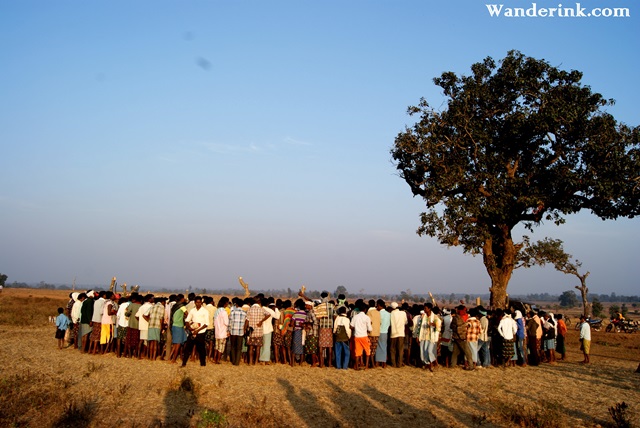

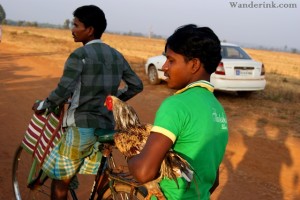
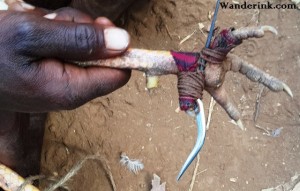
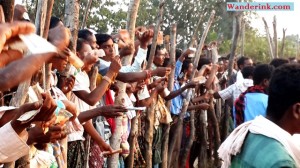
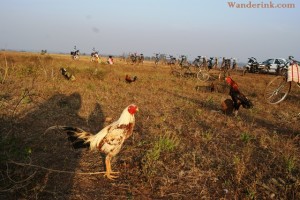
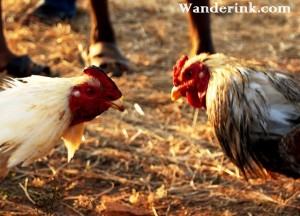









The bull owners in Punjab are a dejected lot too since bullock-cart races were banned, resulting in low spectator turnouts at the Rural Olympics in Kila Raipur. These guys spend serious money on nurturing them, quite like they do sons, in anticipation of the spoils which often run into lakhs.
The bullfights of Texas and the bull run of Spain has long been in the cross sights of animal rights’ activists but tradition ultimately held sway over our contemporary notions.